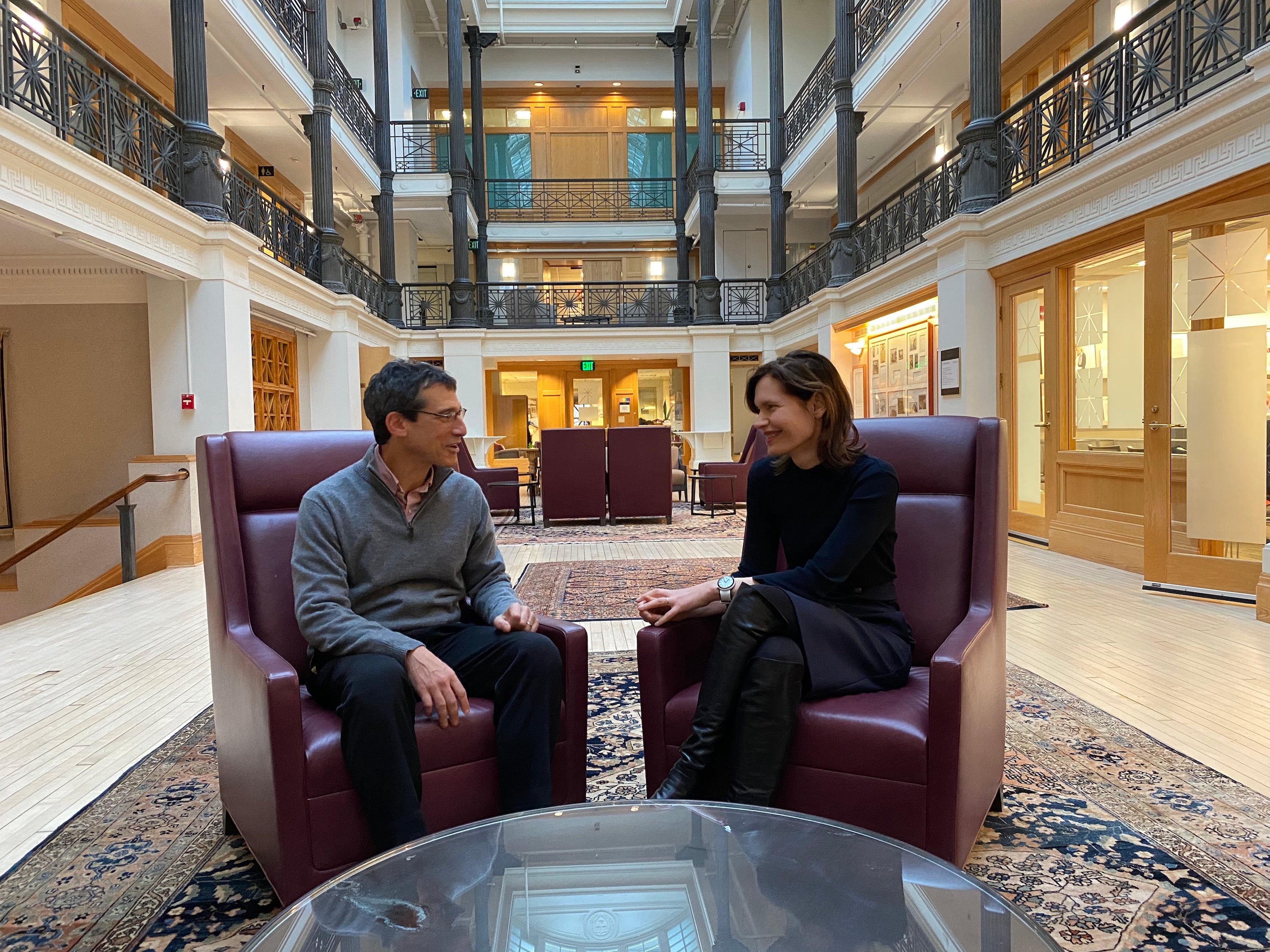News & Highlights
Topics: Clinical & Translational Research, Collaboration & Team Science, Education & Training, Five Questions, Mentoring
Five Questions with Miriam Bredella and Seward Rutkove
Our co-directors of KL2/Catalyst Medical Research Investigator Training discuss the importance of mentorship and collaboration.

Miriam Bredella, MD, and Seward Rutkove, MD, are co-directors of the KL2/Catalyst Medical Research Investigator Training (CMeRIT) program, a two-year mentored research and advanced education program in clinical and translational research for junior faculty and senior fellows.
It’s a highly competitive program and offers funding, extensive mentorship opportunities, and a customized Harvard Catalyst continuing education curriculum. Approximately 95% of KL2/CMeRIT award recipients subsequently receive independent funding.
Bredella, is a Harvard Medical School professor of radiology, vice chair of radiology, and director of the Center for Faculty Development at Massachusetts General Hospital, and also serves on the NIH Clinical and Translational Science Awards Program Steering Committee. Rutkove is an HMS professor of neurology and chief of the Division of Neuromuscular Disease at Beth Israel Deaconess Medical Center.
What gaps does the KL2/CMeRIT program fill in the evolution of a clinical and translational researcher?
Miriam: It’s been described as the valley of vulnerability, this time when someone has finished a fellowship or training and wants to become an independent investigator. It’s when they’re most vulnerable and most likely to stop research if they don’t get funding on the first try and have no safety net.
Then they go into clinical work or leave academia. We are here to help them make this critical transition. All of our grant recipients have stayed in clinical/translational research with support coming from NIH grants or large foundation awards.
Seward: The program offers not just that critical early funding, but also an interactive structure of support and training so young investigators can become successful at obtaining independent funding. The standard NIH K awards have become more competitive and we’re a stepping stone. You used to get a K to get an R, and now you need a KL2 to get a K to get an R.
Grant recipients not only have their laboratory mentor, but also an advisory committee and additional mentors in fields like genetics, biostatistics, biomarkers, and imaging. Why is such mentorship so critical?
Miriam: New studies are showing that having a team of mentors is not only important to get different perspectives on your research beyond your own area, but also because you are more likely be successful. Joan Reede, our dean for diversity and community partnership, has data that show that people who have larger networks of connections are more likely to get promoted and to get grants.
“The program offers not just that critical early funding, but also an interactive structure of support and training so young investigators can become successful at obtaining independent funding.” – Seward Rutkove
Seward, from your research on diagnostics and therapeutics for neuromuscular diseases, you developed a technique to assess muscle function and started a company to develop it, with applications also for athletes and astronauts. What lessons do you use from your experience to help others develop their ideas?
I’m an example of why a broad cross-fertilization of ideas is really critical. I interact with many engineers and data analysts. I pass along my experience with funding opportunities outside standard NIH R01s or R21s — such as small business grant mechanisms, venture funding, and funding through partnerships with pharma and others.
My work has brought me from ALS to muscular dystrophy and now to space research. We’re finding many potential applications. I’m just back from a NASA conference and they’re putting our muscle assessment in a seven-year human study, measuring astronauts before they go up into space for six weeks, six months, or one year, and then assessing them when they return. In my lab, we also model martian and lunar gravity in animals to look for changes.
Miriam, you’ve developed new imaging techniques as part of your metabolic image research to learn about the effects of different fat deposits on bone metabolism in those who eat too much or too little. What advice do you give?
I’m really the poster child of collaboration. As a radiologist it is much easier to get grants if you work with investigators from other specialties to answer important clinical questions. Since starting my research, I’ve had a close collaborative relationship with neuroendocrinologists, pediatricians, oncologists, and orthopedic surgeons.
The advice I give young investigators is to look outside your area. Maybe there is someone who also has a really good idea and if you both get together, your idea may be twice as good and the grants you write much stronger.
At the NIH, more emphasis is put on team science and many grants have multiple principal investigators. Branch out and collaborate.
Seward: One of these days Miriam and I are going to collaborate too.
Miriam: I always wanted to be an astronaut.
Seward: That makes one of us!
Past KL2 awardees mention the wonderful community of mentors and colleagues they leave with. Have you ever collaborated with them?
Miriam: I am doing a couple of projects now with prior grant awardees and have collaborated with others previously. We try to keep in touch with all of them. We’re happy when they do well, get their next grant, and are successful.
Seward: One of our current KL2 awardees actually just reached out to me to potentially collaborate. My lab is doing some lung-related imaging using impedance techniques in neuromuscular diseases, and he is interested in applying our approaches to work he’s doing. It’s gratifying to see the awardees speaking to each other after our monthly meetings and events and getting to know each other. It builds camaraderie. I had a pretty lonely start, I’d say. A community like this would have been nice.

